June 7, 2021 at 10:35 am
Maine has eight species of semi-aquatic turtles that inhabit a number of regions and ecosystems across the state. Turtles are a unique group of reptiles, with an anatomical design that ensures protection from a number of predators. A turtle’s shell, or carapace, is made of hard bony plates covered in scutes, which are the same material as our fingernails. Fused to the inside of their shell is their spinal column and the belly side of the turtle shell, the plastron, are the fused ribs and sternum. So, a turtle’s shell is a unique armor that a turtle physically cannot live without.
Blanding’s turtle (Endangered) have a distinguishing yellow chin and throat and small yellow speckles on its domed shell. Blanding’s turtles are diurnal hunters, feeding on both land and in water, eating fish, frogs, berries, vegetations, and even crayfish.
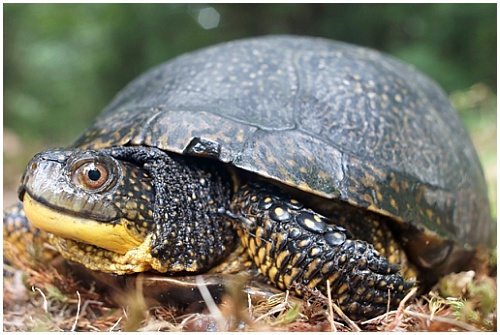
Eastern box turtles (Endangered) are very rare and appear to only exist in southern Maine. Female wood turtles have the ability to store sperm for several years before laying fertilized eggs.
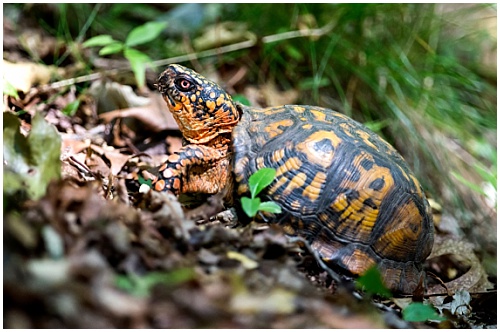
Eastern musk turtles are the smallest turtle species in Maine, reaching only 2 to 5 inches in length. Eastern musk turtles get their name from a foul-smelling secretion from glands along the bottom of the shell when handled, giving them the nickname ‘stinkpot’.
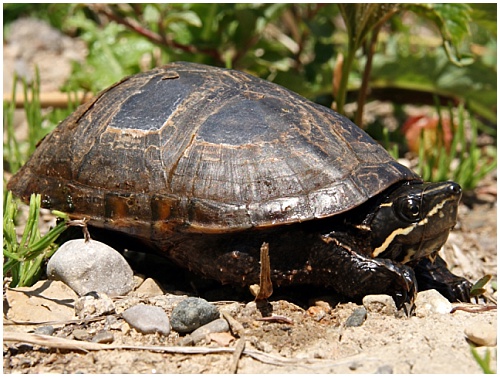
Painted turtles are named for their bright coloration of yellows, greens, reds, and black on their shell and has the nickname, the ‘sun turtle’ because of its affinity for basking in the sun of logs and rocks. It often sleeps on the bottoms of ponds among vegetation, slowing its metabolic rate to reduce oxygen use, remaining underwater for hours.
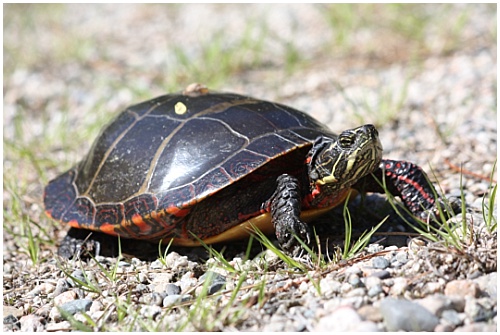
Red-eared slider turtles are non-native to Maine and should never be released into the wild. So far, they seem to be sparsely distributed and are not known to be breeding here, but it is important to refrain from introducing a non-native species into habitats where other species could be negatively impacted by their presence.
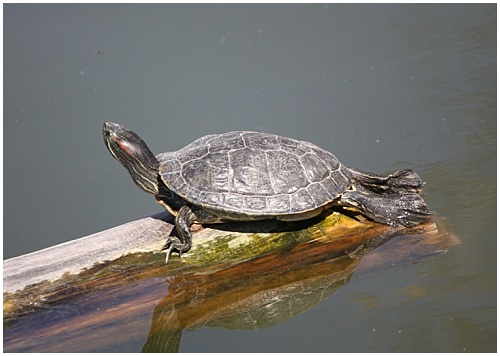
Snapping turtles are among the most commonly known and seen species in Maine. They are large with a long neck, and have a powerful bite. Snapping turtles provide a great deal of clean up in our state’s bodies of water, acting as a scavenger cleaning up dead organisms. Snapping turtles, and some other species of turtles, are unique because their sex is temperature dependent during development. Cooler temperatures lead to males, with warmer temperatures leading to females.
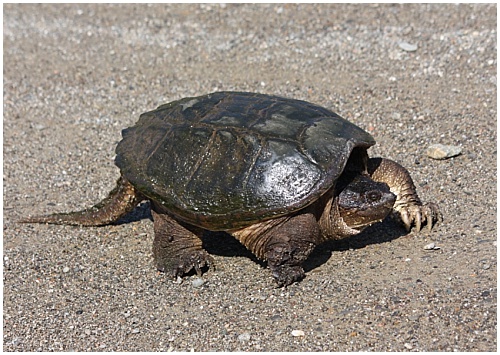
Spotted turtles are Threatened and rarely found in Maine, only occurring in southern and midcoast regions of the state. They prefer aquatic habitats such as slow streams, wet meadows, ponds, vernal pools, marshes and shrub swamps. Spotted turtles can travel up to 1.7 miles in the course of a year to find nesting areas. Unfortunately, this species has been negatively impacted by habitat loss, road mortality, and the illegal wildlife trade. MDIFW continues to broaden its population assessments in an effort to gather baseline data for supporting this species statewide.
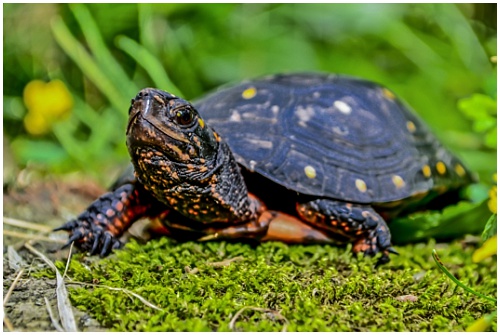
Wood turtles are a unique species with a number of interesting adaptations. Wood turtles’ mate year-round, with females storing sperm for several years before laying fertilized eggs sometimes. Wood turtles also will ‘stomp’ for earthworms, using footfalls that presumably mimic rainfall, bringing earthworms to the surface.
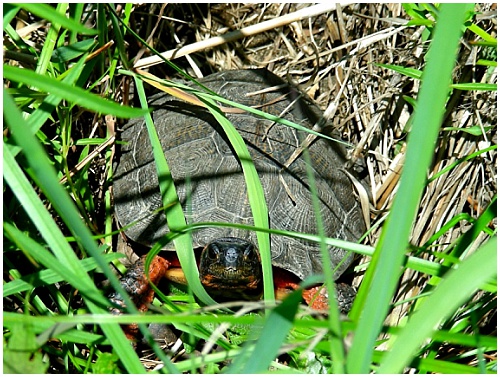
Learn about the Department’s work with turtles and more in the Reptile, Amphibian, and Invertebrate Conservation and Management report (PDF).